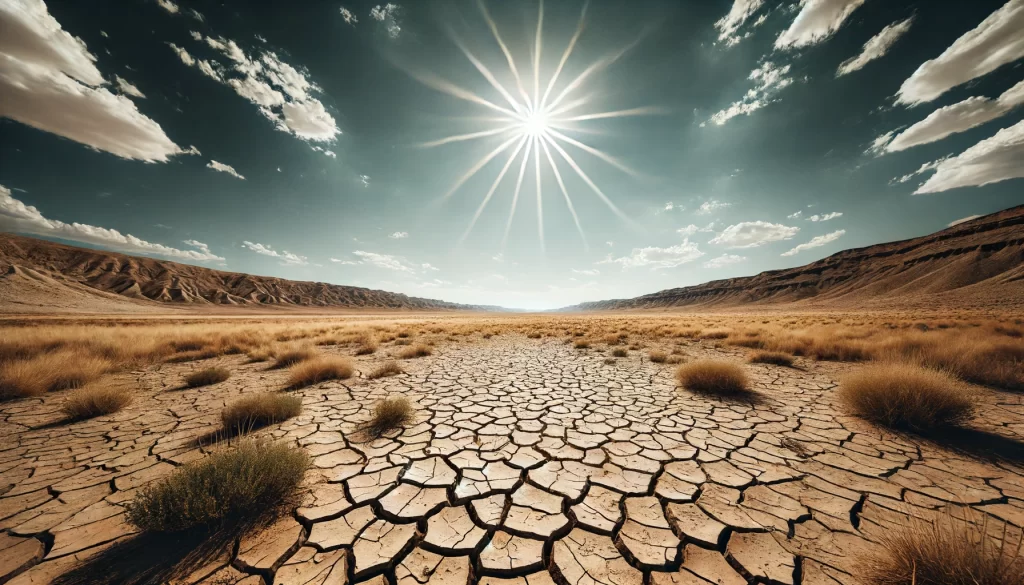June 14, 2024 – The National Oceanic and Atmospheric Administration (NOAA) has declared the end of the El Niño climate phenomenon, which has been influencing global weather since June 2023. The NOAA Climate Prediction Center announced that La Niña is likely to develop as early as next month, with a significant chance it will persist through the upcoming winter.
Understanding El Niño and La Niña: El Niño and La Niña are opposing phases of the El Niño-Southern Oscillation (ENSO) cycle, which affects weather patterns worldwide. El Niño is characterized by warmer-than-average sea surface temperatures in the central and eastern tropical Pacific Ocean, leading to various climatic impacts such as increased rainfall and higher temperatures in different regions. Conversely, La Niña involves cooler-than-average sea surface temperatures and typically brings different weather patterns.
Impacts of El Niño: During the recent El Niño event, which began last June, the atmosphere experienced significant changes, resulting in wetter-than-normal conditions in several areas. Notably, the Southeast and California experienced an unusually wet winter, with 51 atmospheric rivers causing extensive rain and snowfall. This phase of El Niño contributed to global temperature increases and extreme weather events.

Transition to La Niña: As El Niño ends, a brief period of neutral conditions is expected before La Niña’s anticipated arrival. La Niña’s development will likely shift weather patterns across the United States. Michelle L’Heureux, a climate scientist at the NOAA Climate Prediction Center, explained that La Niña tends to push the jet stream northward. This shift generally brings colder and wetter conditions to the northern U.S. and warmer, drier conditions to the southern U.S. during winter and early spring.
Hurricane Season Forecast: La Niña’s impact on the Atlantic hurricane season is particularly significant. Historically, La Niña conditions are favorable for increased hurricane activity because they reduce vertical wind shear, which can disrupt storm formation. With sea surface temperatures in the Atlantic at near-record highs, NOAA predicts an above-normal hurricane season. This year, there is an 85% chance of an active season, with forecasts indicating up to 25 named storms, including 13 hurricanes, and at least four major hurricanes.
Matthew Rosencrans, NOAA’s lead meteorologist for the seasonal hurricane outlook, noted that years with similar conditions, such as 2005, 2017, and 2020, experienced significant hurricane activity. For instance, Hurricane Katrina in 2005 devastated New Orleans, and 2017’s hurricanes caused over $300 billion in damages. In 2020, 11 out of 30 named storms hit the U.S. coastline.

Global Implications: La Niña’s influence extends beyond the Atlantic hurricane season. It also affects winter weather across the United States. The Pacific jet stream often meanders northward during La Niña, leading to cooler and wetter conditions in southern and interior Alaska and the Pacific Northwest, while the southern U.S., from California to the Carolinas, experiences warmer and drier conditions. Additionally, La Niña can lead to more nutrient-dense waters off the Pacific coast, attracting species like squid and salmon.
Historical Context and Climate Change: El Niño and La Niña have historically influenced global temperatures, with El Niño generally increasing and La Niña decreasing the global mean air temperature. However, the strong influence of climate change means that overall global temperatures continue to rise, regardless of these natural cycles. The World Meteorological Organization reported that the past nine years have been the warmest on record, despite the cooling effects of a multi-year La Niña from 2020 to early 2023. In fact, 2023 was recorded as the hottest year ever.
Ko Barrett, Deputy Secretary-General of the World Meteorological Organization, emphasized that while ENSO cycles impact weather patterns, climate change exacerbates the severity of extreme weather events. “The end of El Niño does not mean a pause in long-term climate change as our planet will continue to warm due to heat-trapping greenhouse gases,” she said. This ongoing warming trend is expected to continue influencing weather patterns and contribute to more frequent and severe climate-driven disasters.
This article is based on the following articles:
https://www.npr.org/2024/06/14/nx-s1-5005924/la-nina-atlantic-hurricane-season-us-winter-weather
https://www.nytimes.com/2024/06/14/climate/el-nino-la-nina.html

Background Information
Understanding Climate Patterns:
- Climate vs. Weather:
- Climate refers to the long-term average of weather conditions, typically over 30 years or more. It includes patterns of temperature, humidity, wind, precipitation, and other atmospheric elements.
- Weather describes the short-term atmospheric conditions in a specific place at a specific time, such as a sunny day or a rainy afternoon.
- The El Niño-Southern Oscillation (ENSO):
- ENSO is a climate phenomenon that consists of two opposite phases: El Niño and La Niña. These phases significantly influence global weather and climate patterns.
- El Niño and La Niña are part of this natural cycle, alternating approximately every two to seven years.
El Niño:
- Definition:
- El Niño is characterized by unusually warm sea surface temperatures in the central and eastern tropical Pacific Ocean.
- This warming typically occurs around the Christmas season, which is why it is named “El Niño,” meaning “the little boy” in Spanish, referring to the Christ child.
- Effects on Global Weather:
- Warmer Ocean Temperatures: El Niño causes the ocean temperatures in the tropical Pacific to rise, affecting weather patterns worldwide.
- Increased Rainfall: Regions like the southern U.S. and the Pacific coast of South America experience more rainfall, which can lead to flooding.
- Droughts: Conversely, areas like Australia, Indonesia, and the Philippines may experience drier conditions, leading to droughts.
- Impact on Marine Life: Warmer waters can disrupt marine ecosystems, affecting fish populations and other sea life.
La Niña:
- Definition:
- La Niña is the opposite phase of El Niño, marked by cooler-than-average sea surface temperatures in the central and eastern tropical Pacific Ocean.
- The name “La Niña” means “the little girl” in Spanish.
- Effects on Global Weather:
- Cooler Ocean Temperatures: La Niña causes ocean temperatures to cool, influencing weather patterns differently than El Niño.
- Colder and Wetter Winters: In the northern U.S., La Niña often leads to colder temperatures and increased precipitation, resulting in more snow.
- Warmer and Drier Conditions: The southern U.S. typically experiences warmer and drier conditions during La Niña.
- Impact on Hurricanes: La Niña can lead to more active hurricane seasons in the Atlantic due to reduced vertical wind shear, which allows storms to develop and strengthen.
Hurricanes and Their Development:
- Definition:
- A hurricane is a type of tropical cyclone, a powerful storm system characterized by a low-pressure center, strong winds, and heavy rain.
- Hurricanes form over warm ocean waters and can cause significant damage due to strong winds, storm surges, and heavy rainfall.
- Factors Influencing Hurricane Activity:
- Sea Surface Temperatures: Warm ocean waters provide the energy needed for hurricanes to form and intensify.
- Wind Shear: Vertical wind shear refers to changes in wind speed and direction with height. High wind shear can disrupt the development of hurricanes, while low wind shear allows them to grow stronger.
- ENSO Phases: El Niño and La Niña play crucial roles in determining the activity of hurricanes. El Niño tends to suppress hurricane formation in the Atlantic, while La Niña tends to enhance it.
Climate Change:
- Definition:
- Climate change refers to long-term changes in temperature, precipitation, and other atmospheric conditions on Earth. It is primarily driven by human activities, such as burning fossil fuels, deforestation, and industrial processes.
- Impacts on Weather Patterns:
- Global Warming: The increase in greenhouse gases, such as carbon dioxide, leads to the warming of Earth’s atmosphere and oceans.
- Extreme Weather Events: Climate change contributes to more frequent and severe weather events, including heatwaves, storms, and heavy rainfall.
- Sea Level Rise: The warming of the oceans causes sea levels to rise, leading to increased coastal flooding and erosion.
Preparation for Weather Events:
- Importance of Preparedness:
- Understanding weather forecasts and climate predictions is crucial for preparing for potential impacts, such as hurricanes, floods, and droughts.
- Preparedness measures include creating emergency plans, securing properties, and staying informed about weather updates.
- Resources for Information:
- Organizations like the NOAA and the National Weather Service provide valuable information and forecasts related to climate and weather patterns.
- Local weather services and emergency management agencies also offer guidance and resources for preparedness.
Please subscribe to Insight Fortnight, our biweekly newsletter!
